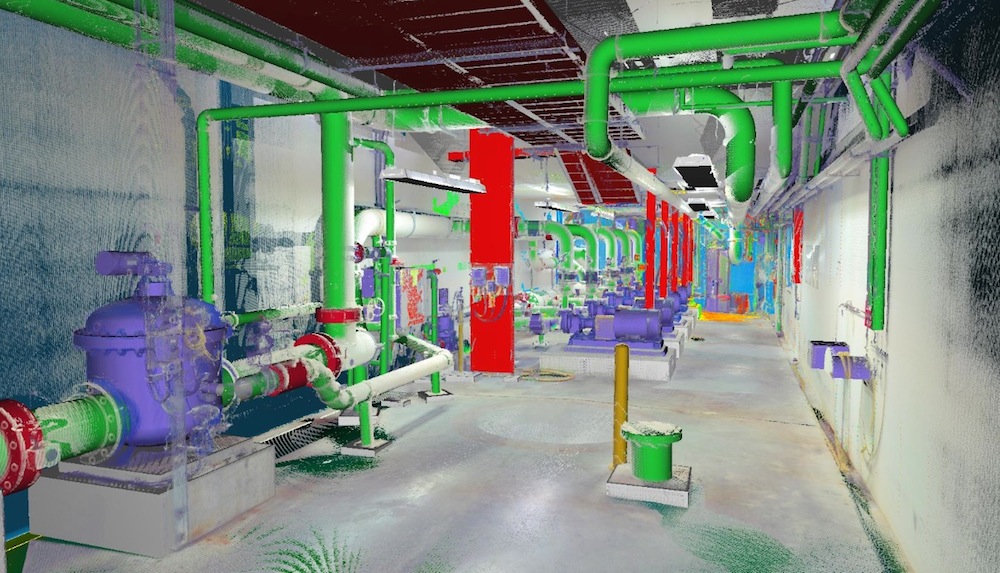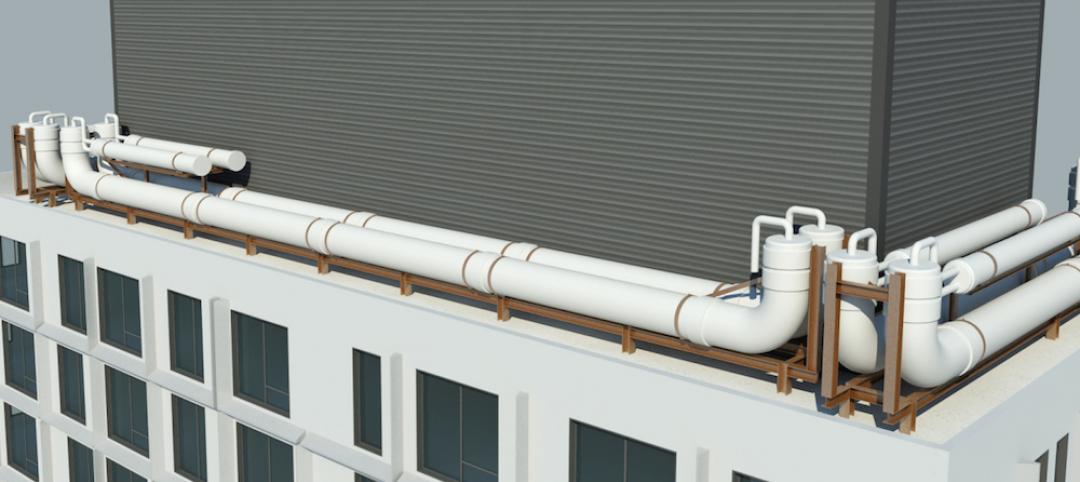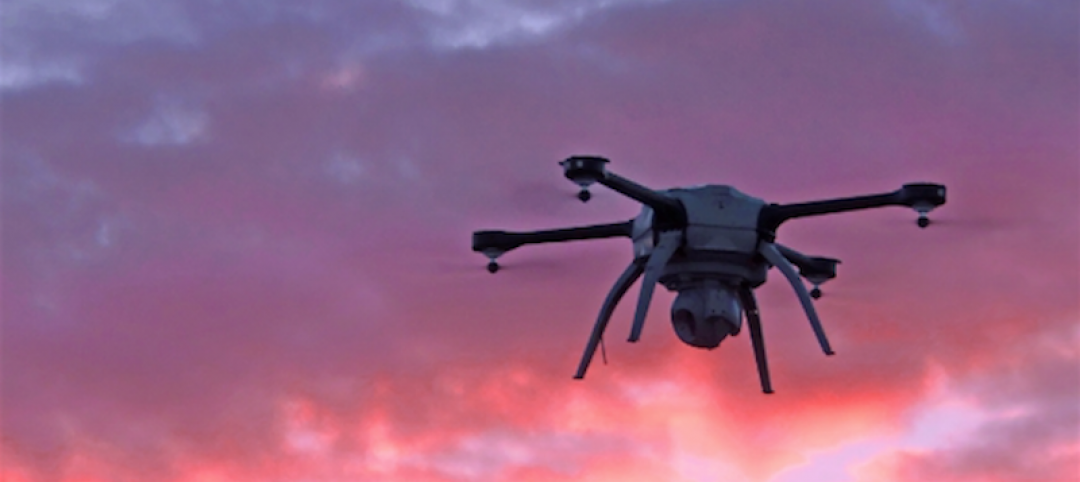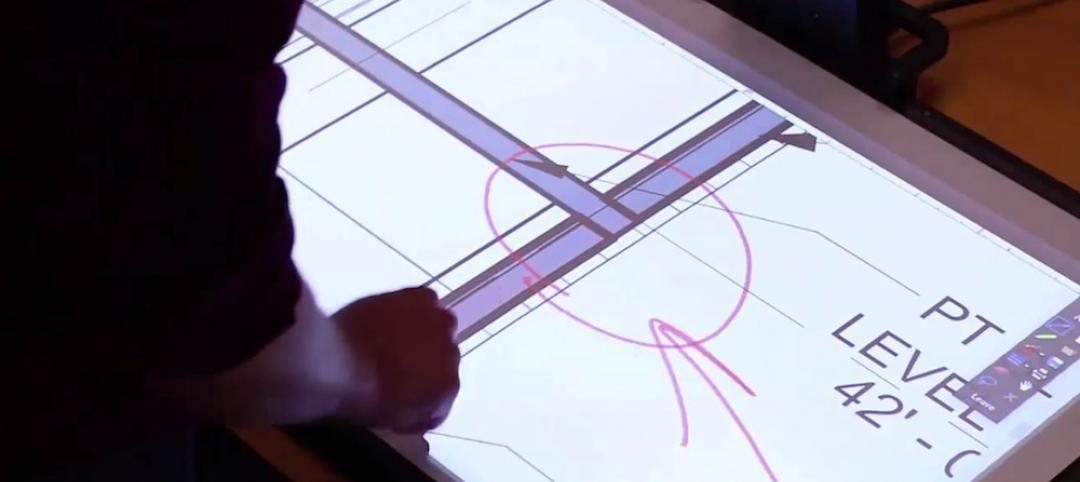When the engineering/architecture firm SSOE performed laser scanning for projects in the past, it was always client driven. The scanning, data processing, and modeling were done only when customers demanded them.
But about two years ago, the firm “took a leap of faith,” recalls its Technology Leader Mark LaBell, when he convinced his boss to approve a $2,500 one-day scan. Since then, SSOE has made a deeper dive into this service by significantly increasing its investments in servers, computers, and personnel training, and widening the network of third-party scanning companies it uses.
The result, says LaBell, “has been a fire hose” of client interest. As of late January, SSOE had 16 projects that were either being scanned or for which laser scanning was part of the proposal. “That’s just in the last six weeks,” says LaBell. He estimates the firm will deploy laser scanning on 75 projects this year.
Coverage of 3D Laser Scanning brought to you by:
Laser scanning has become an essential reality-capture tool and competitive advantage for a growing number of AEC firms. It provides an extra layer of quality control and accuracy, and allows firms to expand their portfolios.
Linn Bjornrud, AIA, Associate and BIM Manager with Leo A Daly, says his firm has clients that are conducting scientific studies deep within the Earth, “and we have architecture we need to build there that, prior to laser scanning, would have been quite a feat to accomplish.”
Ryan Martin, AIA, NCARB, Leo A Daly’s Director of Design–Hospitality Architecture, adds that laser scanning is useful when renovating and repositioning a building above ground, too. On one such hospitality project in Colorado, Leo A Daly scanned the exterior to view the building from all angles, “and take off dimensions as we work through design issues,” says Martin.
Increasingly, AEC firms are using laser scanning as a risk management tool, says Matthew Daly, Regional Manager–Western U.S. for FARO Technologies, a supplier of scanning equipment and software. He elaborates that a contractor might scan concrete as it’s being pored, or steel as it’s being erected, to track the integrity of the materials and their installation before the next construction phase proceeds.
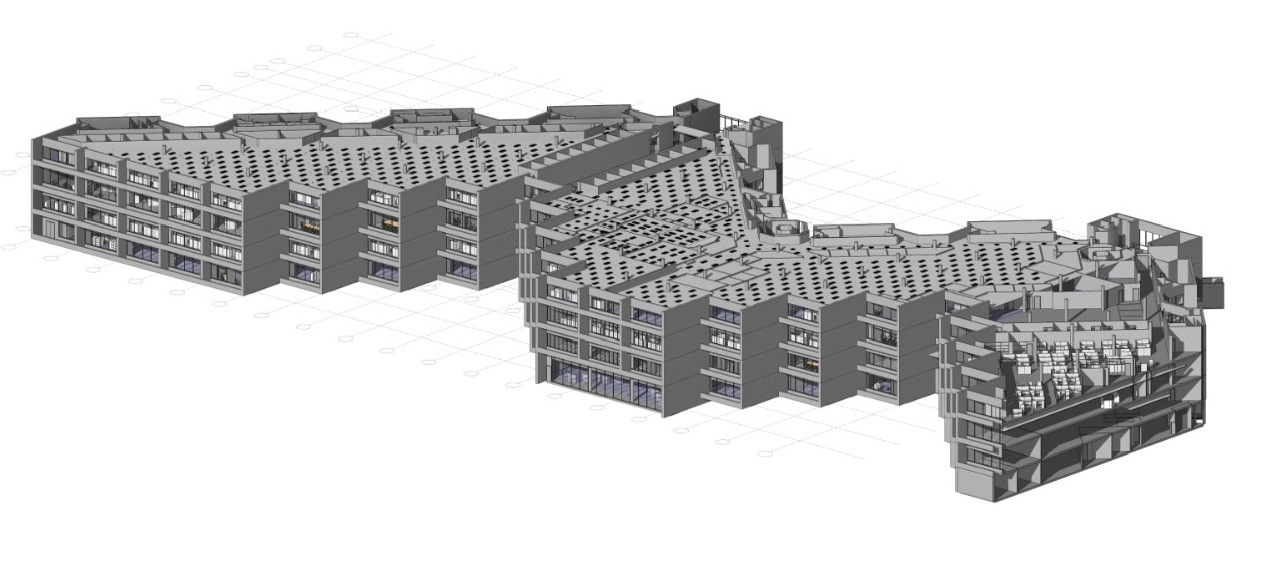 The utility of laser scanning was demonstrated recently when AE firm Nelson scanned the entire 700,000 sf of Prudential’s headquarters in Minneapolis, Minn., for a major renovation project. Nelson used scans to confirm the original blueprints’ dimensions and positioning. Image courtesy Nelson.
The utility of laser scanning was demonstrated recently when AE firm Nelson scanned the entire 700,000 sf of Prudential’s headquarters in Minneapolis, Minn., for a major renovation project. Nelson used scans to confirm the original blueprints’ dimensions and positioning. Image courtesy Nelson.
OUTSOURCE OR IN-HOUSE?
WD Partners owns its scanning hardware and software, which amounts to a six-figure cost proposition, says Andrew Maletz, AIA, NCARB, LEED AP, Executive Vice President. The number of projects it scans justifies the cost, he explains. But the first cost for the equipment and software definitely makes other firms think twice about committing more fully to scanning technology.
Over the past five years, Nelson has bought a few scanners. But it prefers to draw upon a network of certified scanning providers it has developed by region. The difficulty of outsourcing laser scanning, though, is establishing standards, says Brandon Pike, Nelson’s Strategic Manager, BIM Services. His firm also prefers providers that can deliver BIM models from scan data.
Daly counters that the price of scanning and data processing has come down in recent years. FARO’s scanners run around $60,000, and Daly says AEC firms are using this equipment for a variety of projects, including hospital construction and renovation, and commercial building rehabs.
Scanning comes in handy when firms don’t have access to a building’s original documents, or question the accuracy of legacy documents. “Understanding what’s going on with the floors is a big reason for using scanners,” says Daly.
He and other AEC experts point out that laser scanning often shows walls inside buildings that aren’t plumb. “So interpretation needs to happen” for design purposes, says Leo A Daly’s Bjornrud. “The question, then, is how many points of interpretation are there between the scans and when we get the product?”
It’s the very objectivity of scanned data that Maletz of WD Partners thinks is laser scanning’s biggest value. “With handheld methods, there is often a degree of subjectivity and interpretation required when analyzing existing conditions.”
Laser scanning captures huge amounts of data; so much so, in fact, that scan files can overwhelm a firm’s servers. It can take months to corral and manipulate this information for modeling purposes. Maletz says that while there are more software tools that help streamline this conversion, “the process is not yet automated, and those who consider reality capture need to have a well-thought-out BIM execution plan.”
SSOE’s LaBell says his firm has been using Autodesk’s ReCap software to make laser-scanning data easier to work with. He says SSOE is currently involved in an ongoing project for which seven of its offices have been sharing 500-plus gigabytes of scanned data.
“We can edit the point cloud to engineer around the things that weren’t going to be there” after construction, says LaBell. That data could be edited for use with Revit, CAD, or other modeling software.
Because this process reduces time and expenses, “we have been able to go after projects more aggressively, with the promise that the design and engineering would be quicker,” he says.
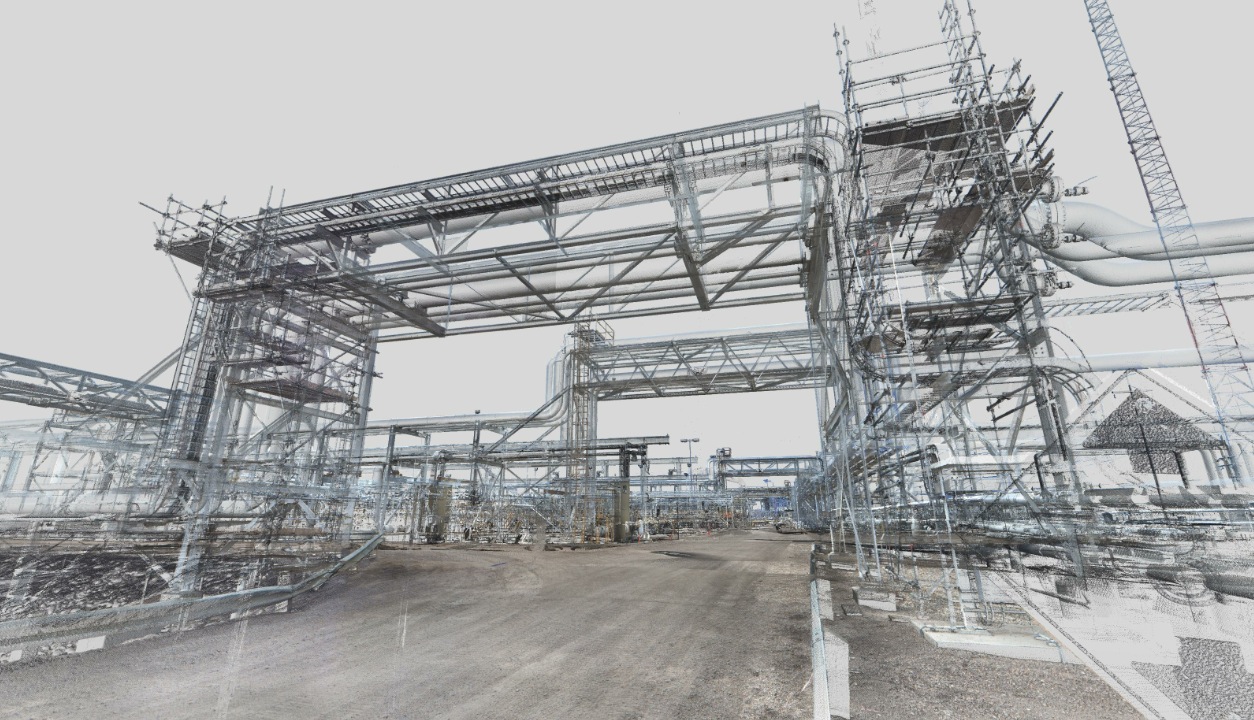
APPS HELP CAPTURE REAL, VIRTUAL IMAGES
As laser scanning is more widely used, AEC firms are also weighing the pros and cons of other tools that capture and augment real images, or create virtual realities.
Daqri recently launched an updated version of its Smart Helmet for commercial use. The high-tech hardhat features a 4D visor that relies heavily on the Internet of Things and a sensor and camera array to provide users with the means to analyze and detect objects from the worker’s surroundings.
Nelson and Clark Nexsen are among the firms that are evaluating software and apps, such as Trimble’s Project Tango, Matterport, and DotProduct’s Phi.3D, which run on professional-grade or mobile devices to capture 3D images and video of rooms on the fly. These tools allow users to augment and convert that data into 3D models.
The gaming industry seems to be the starting point for many of the AR and VR options that AEC firms are eyeing. Last year, Autodesk launched a game engine called Stingray, derived from an engine called Bitsquid, which Autodesk acquired in 2014. VIMtrek has licensed gaming software for AEC usage: a Revit add-on called Producer that quickly converts project files into 3D environments; and Viewer, which allows users to navigate around that environment as if they were moving through a video game.
Daly believes that as demand for more immersive visual experiences increases, so will the demand for laser scanning that, “can still provide the highest-quality reality-capture data.”
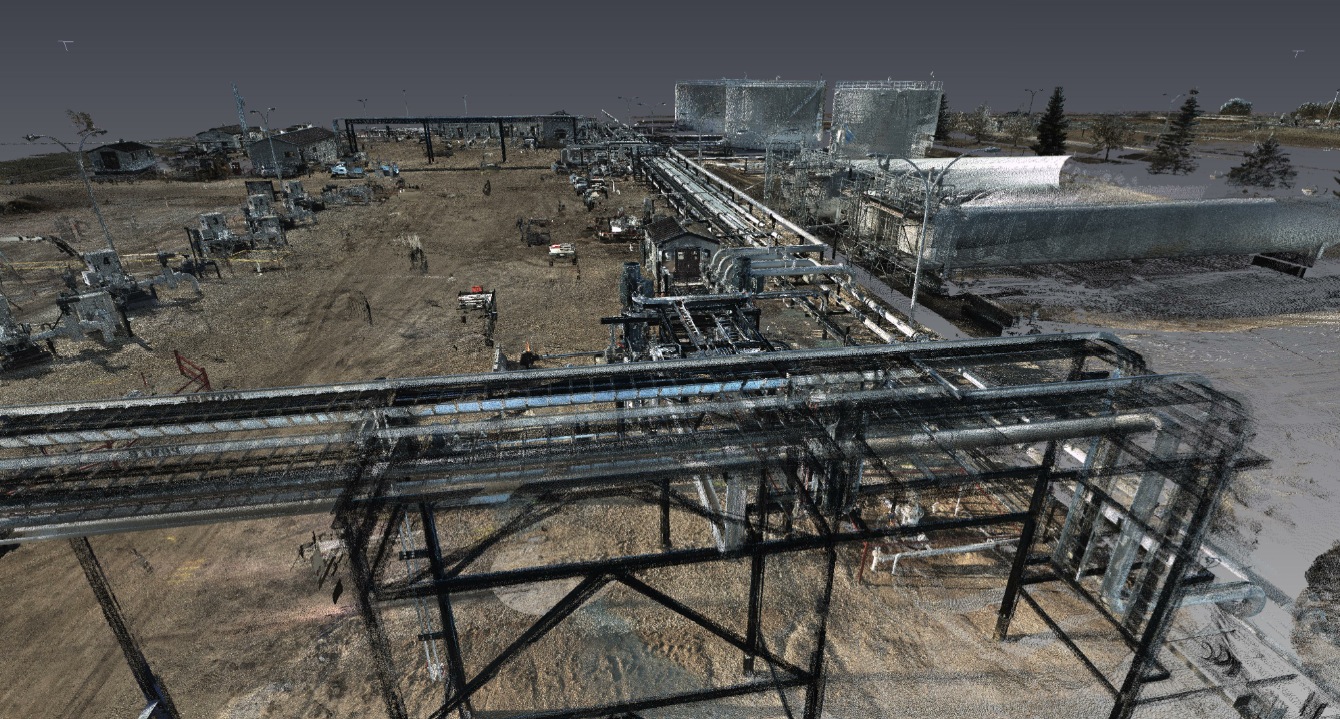
Related Stories
AEC Tech | May 12, 2016
How graphics can assist with the progress of a campus plan
Decision-making at higher education institutions can be difficult, but SmithGroupJJR's Michael Bostic writes that graphics can help by visualizing data and simplifying complex decisions.
AEC Tech | May 10, 2016
Thornton Tomasetti launches new tech company
TTWiiN initially features six products and will add more via its own incubator.
AEC Tech | May 9, 2016
Is the nation’s grand tech boom really an innovation funk?
Despite popular belief, the country is not in a great age of technological and digital innovation, at least when compared to the last great innovation era (1870-1970).
Big Data | May 5, 2016
Demand for data integration technologies for buildings is expected to soar over the next decade
A Navigant Research report takes a deeper dive to examine where demand will be strongest by region and building type.
BIM and Information Technology | May 2, 2016
How HDR used computational design tools to create Omaha's UNO Baxter Arena
Three years after writing a white paper about designing an arena for the University of Nebraska Omaha, HDR's Matt Goldsberry says it's time to cherry-pick the best problem-solving workflows.
Virtual Reality | Apr 29, 2016
NBBJ to develop virtual reality productivity platform
The Seattle design firm has partnered with Visual Vocal, a startup VR company.
Drones | Apr 25, 2016
The Tremco SkyBEAM UAV is the first to be approved by the FAA for nighttime commercial operation
The SkyBEAM UAV is used for identifying energy leaks, rooftop damage, deteriorating façades, and safety issues without requiring scaffolding or cranes.
AEC Tech | Apr 15, 2016
Should architects learn to code?
Even if learning to code does not personally interest you, the growing demand for having these capabilities in an architectural business cannot be overlooked, writes computational design expert Nathan Miller.
Building Tech | Apr 12, 2016
Should we be worried about a tech slowdown?
Is the U.S. in an innovative funk, or is this just the calm before the storm?
AEC Tech | Apr 12, 2016
Startup introduces PaperLight, an interactive projection screen for AEC pros
The device lets users edit sketches, plans, and images with a stylus or their fingers.


